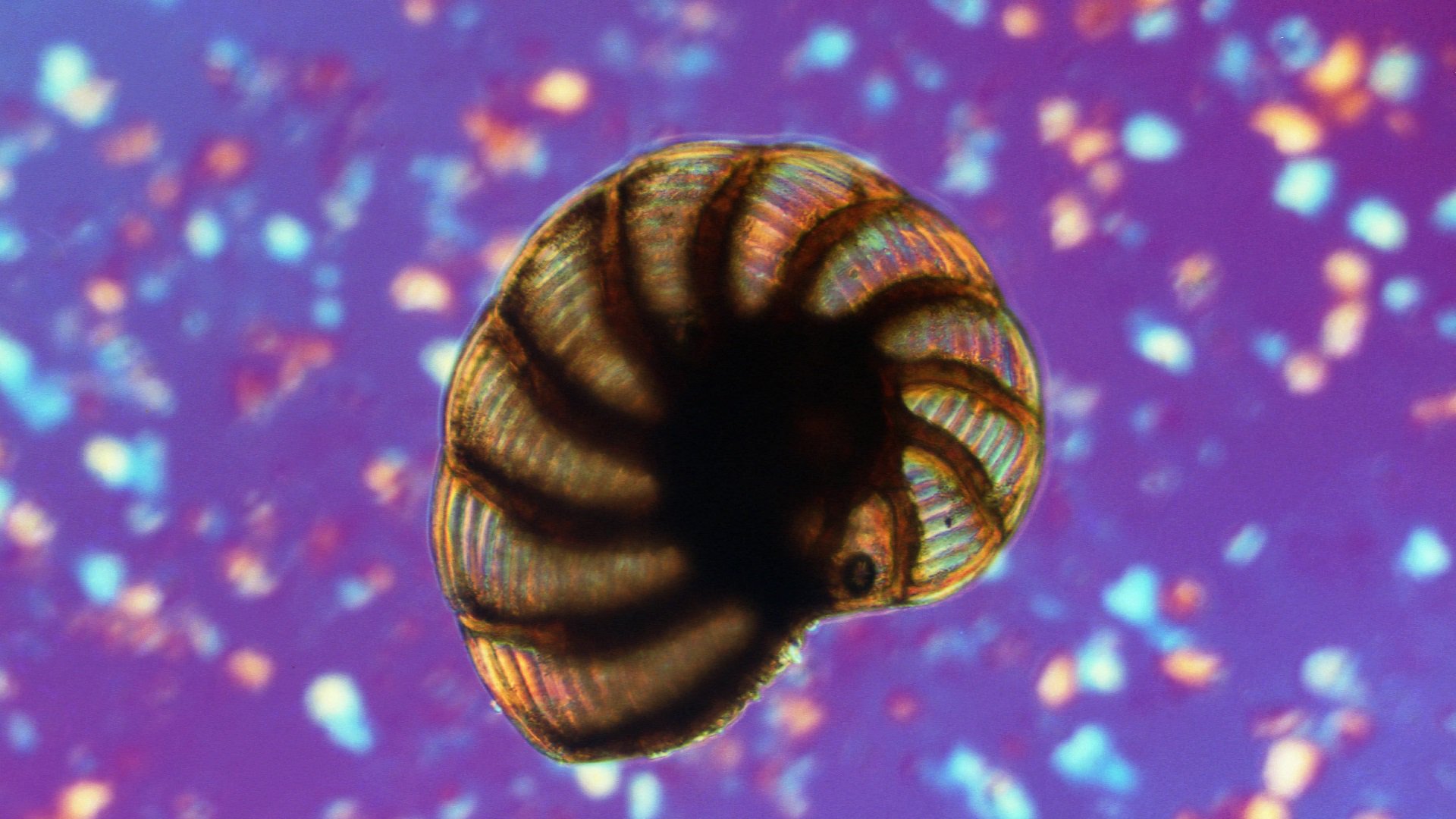The name foraminifera is derived from the Latin words, foramen and ferre, meaning hole bearers. Informally they are referred to as forams. These eukaryote organisms with a calcium skeleton are known as living fossils.
The name foraminifera is derived from the Latin words, foramen and ferre, meaning hole bearers. Informally they are referred to as forams. These eukaryote organisms with a calcium skeleton are known as living fossils.
Form of a foram
Foraminifera is a group of unicellular eukaryotes with a calcium skeleton. Based on where they occur, they are distinguished as benthic (seabed) or planktonic (floating in the water column) foraminifera. These organisms are known for their external skeleton, which is made up of calcite. One foraminifer can consist of one or more calcite chambers. Inside is the cell plasma, which can extend through the openings as thin wires to feed or move. The cell plasma extensions are called pseudopodia.
Living fossils
The external skeleton ensures that this organism is very well preserved as a fossil and can therefore be studied well. Usually these organisms are microscopic, but they can grow up to a few centimeters in size. Due to their rapid evolution, and the fact that they are found often, these organisms are considered guide fossils and are even used for biostratigraphic dating. This means that these fossils can be used to reveal the age of rocks, or to investigate whether there are differences between rock layers.

